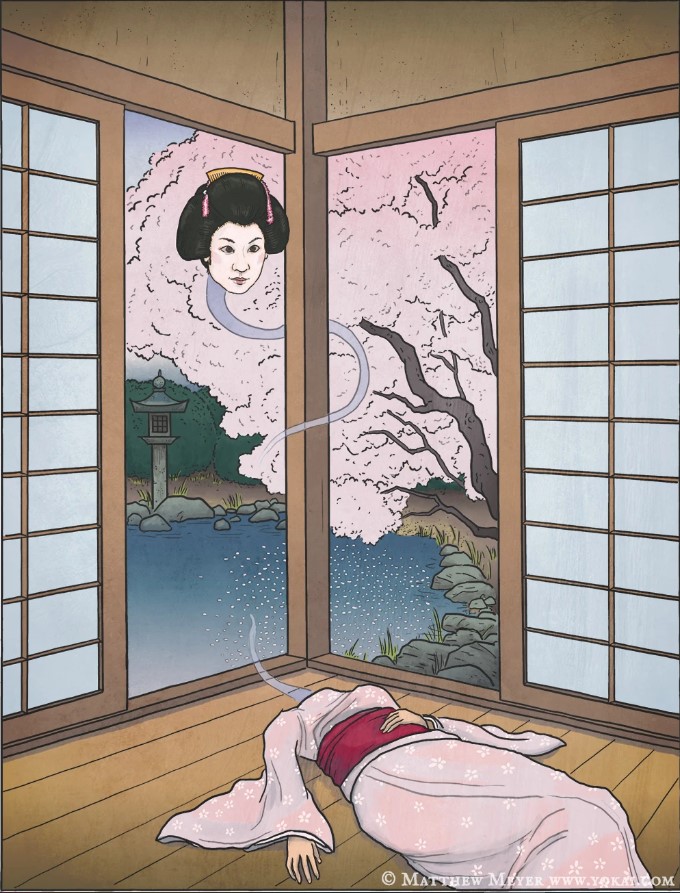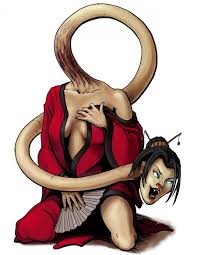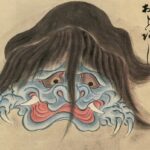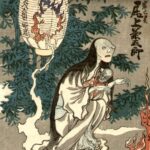Are you a fan of horror stories and intrigued by Japanese legends featuring supernatural creatures? If so, you might be familiar with rokurokobi—entities appearing human by day but capable of stretching their necks to extraordinary lengths at night. Interested in delving into the chilling tales surrounding these yokai? Keep reading to uncover some of the most spine-tingling legends. 🧟♀️

Origin of rokurokobi
Rokurokubi, also known as nukekubi, are mythical creatures from Japanese folklore characterized by their long necks.
The term “rokurokobi” translates to “wheel-necked,” referencing their ability to twist and stretch their necks like a snake. Legend suggests that these beings are women who, having committed grave sins in their past lives, must endure the curse of wandering the world.
During the day, rokurokubi maintain a normal human appearance, seamlessly blending into society. However, when night descends, their true nature is unveiled, and their necks extend to several meters in length. Some versions of the legend propose that rokurokubi are women involved in dark arts or possessed by evil spirits.
In addition to their neck-stretching abilities, some accounts describe rokurokubi transforming into terrifying oni-like figures at night, featuring sharp fangs and devilish eyes. This metamorphosis allows them to instill fear and bewilderment in those they encounter.
Rokurokubi are known for their penchant for human blood, particularly that of young, handsome men. They can pierce walls and windows with their elongated necks, ambushing unsuspecting victims while they sleep.

How do rokurokobi employ their lengthened necks?
Well, it depends. Some enjoy playfully frightening and observing humans, feeding on their fear and life force. On the darker side, some are malicious, resorting to biting, devouring, or drinking blood akin to vampires. Rokurokubi, being mischievous by nature, find it challenging to resist the urge to instigate terror and chaos.
However, not all rokurokobi share the same disposition. Some are more peaceful, desiring a regular life. Certain individuals can manage their transformations, while others only reveal their true nature at night or during sleep.

How can rokurokubi be traditionally exterminated?
Japanese folklore recounts various ways to deal with rokurokubi. According to the tales, these beings can be weakened or eliminated using specific sacred objects or prescribed incantations.
One widely recognized traditional approach involves placing a sacred seal where the rokurokubi sleeps, preventing them from returning to their extended form. Another method mentioned is the use of a sacred sword to kill them.
There’s also a belief that rokurokubi can revert to their human form through repentance for their sins or by receiving genuine love from someone.
These practices underscore the significance of spirituality and protective measures in confronting these creatures.
Rokurokobi tales
Rokurokubi has played a central role in numerous legends and tales transmitted through generations in Japanese culture. These narratives recount frightening encounters with these supernatural entities. By day, rokurokubi take on the guise of beautiful and alluring women, only to unveil their true form at night, instilling terror in their unsuspecting victims.

For instance, a well-known story is that of O-Kiku, a maid wrongly accused of breaking her master’s ten porcelain plates. As punishment, she was tortured and thrown into a well, where she died. Her spirit turned into a rokurokubi, emerging from the well each night to count the missing plates. Her cries echoed in the village, frightening everyone away from the well.
Another famous tale is that of O-Yone, a woman murdered by her jealous husband. As a rokurokubi, she visited her son every night, who lived with his grandmother. Suspicious, the grandmother followed the boy one night and witnessed O-Yone’s neck extending out the window towards the house of the murderer. The grandmother’s screams alerted the village, leading to the capture and execution of the culprit.
Cultural impact
The influence of rokurokubi is visible in modern entertainment through various artistic mediums like manga and anime. Popular creations like ‘Rosario + Vampire,’ ‘Jigoku Sensei Nube,’ ‘Naruto,‘ and Studio Ghibli films such as ‘Spirited Away’ or ‘Pom Poko‘ feature characters inspired by the rokurokubi, presenting a modern interpretation of this mythical creature.

In popular art, one of the notable portrayals comes from the artist Toriyama Sekien, who featured rokurokubi in his illustration book titled “The Night Parade of the Hundred Devils” or Gazu Hyakki Yagyō. In this artwork, a woman with an elongated neck is depicted holding a paper lamp, while another woman observes her with curiosity.
Other notable yokai in Japanese mythology
- Kappa: Aquatic creatures resembling turtles, known for inhabiting rivers and lakes.
- Tengu: Beings with both bird and human characteristics, often associated with war and wind manipulation.
- Tanuki: Fox spirits that take on the appearance of raccoons, associated with luck and transformation.
- Kitsune: Legendary foxes known for their intelligence, cunning, shapeshifting abilities, and blessings.
- Hebi: Magical snakes with the ability to transform into humans, believed to possess healing powers.
- Mujina: Shapeshifting creatures with the capability to take on various forms, often resembling raccoons.
- Bakeneko and Nekomata: Supernatural cats with shapeshifting abilities and mystical powers.
- Oni: Powerful demons depicted as monstrous figures with horns, red or blue skin, and associated with mischief.
- Tsukumogami: Inanimate objects that come to life after a certain age, believed to possess supernatural powers.
I hope you enjoyed this post and found it helpful in learning more about the rokurokubi, one of the most captivating and frightening beings in Japanese culture. If you’re interested in delving deeper, I recommend exploring traditional tales such as “The Rokurokubi of Jōruri Temple” or “The Woman with the Long Neck“, and watching movies or series featuring them as main characters.
And a friendly reminder: if you happen to encounter a rokurokobi, it’s best to ruuuuuun!



